(Seventh of ten articles on the physical evidence in the Kent Heitholt murder on November 1, 2001. The autopsy report and photos have not reviewed to date. This article relies upon interpreting the descriptions of Pathologist Edward Adelstein and Pathologist Larry Blum in addition to interpreting the injuries to the victim’s hands observed in some available photos of the hands.)
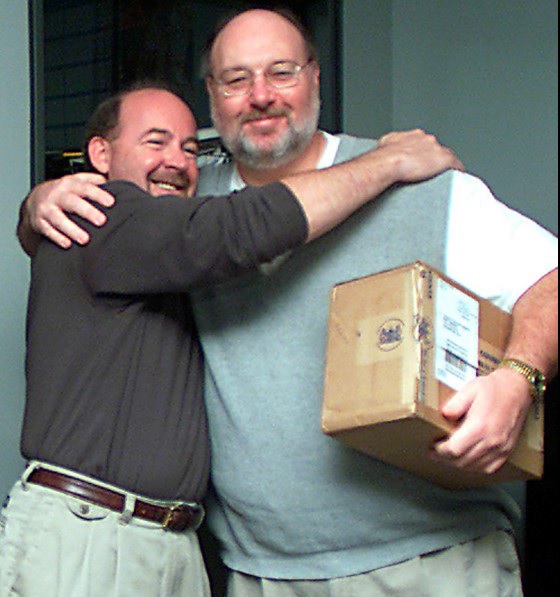
The autopsy on Kent Heitholt was performed by Pathologist Edward Adelstein. He testified at the 2005 Ryan Ferguson trial about his findings.
Initially, Pathologist Adelstein noted that the victim’s sweater and tee shirt had been cut open during resuscitation attempts. The victim’s severed belt buckle without the remaining belt was presented with the victim’s body.
Pathologist Adelstein found bloody wounds to the head, face, and hands. He found the victim’s tee shirt soaked in blood with the light sweater having bloody areas. The right knee area of the pants was soaked in blood.
Upon cleaning the wounded areas, he found that the victim had suffered several wounds to the head and face along with several defensive appearing wounds to the hands and arms. Many of these hand and arm wounds had abrasive features.
Pathologist Adelstein also found ligature markings to the victim’s neck. An internal examination of the throat region found the hyoid bone had been broken along with additional damage to the nearby ligaments and tissues.
Pathologist Adelstein described two linear lacerations to the top of the head and another laceration to the back of the head. One of the lacerations to the top of the head was described as having a right angle feature.
Three abrasion marks were found to the right cheek. Three round circular contusions of about one centimeter were noted to the front of the face above the right eye. Another circular contact was described as a laceration as the skin had been broken. An examination of the skull found no skull fractures. An examination of the brain found no internal hemorrhaging inside the skull.
Elsewhere, Pathologist Adelstein found a strong abrasion to the right knee. Not counting the front cheek abrasions and the knee injury, Pathologist Adelstein opined that the victim had been struck a minimum of eleven times by a dense blunt object. He also opined that the ligature markings were consistent with strangulation by the victim’s own belt. Pathologist Adelstein said the cause of death was strangulation.
The only body images of injuries reviewed and analyzed for this article are of the hands. The images of the right hand are video stills taken while the body was still at the crime scene and the excess blood had not been removed. One image was of the left hand after it had been cleaned of excess blood during autopsy. These images are shown in the following photos;
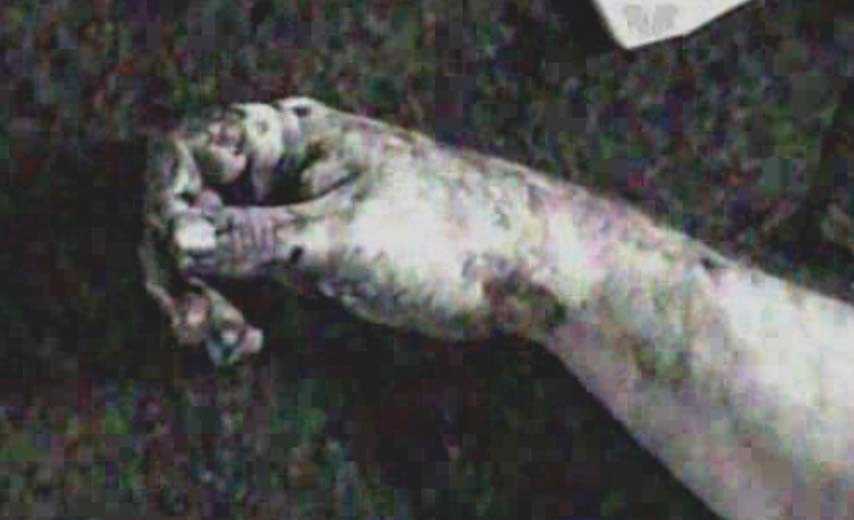
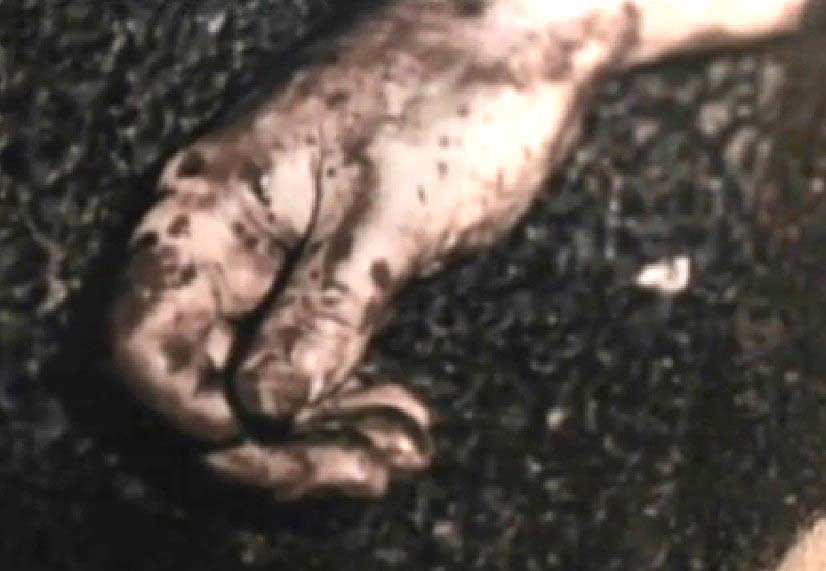
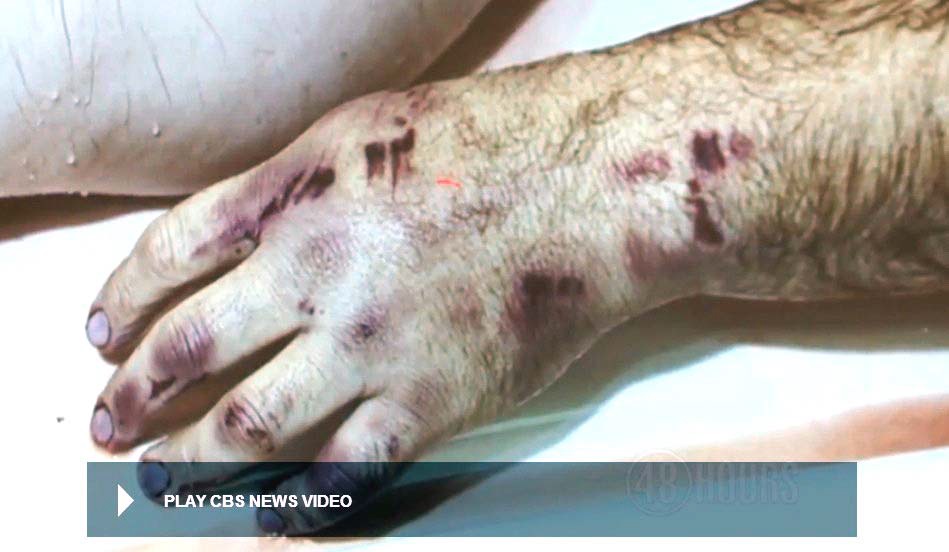
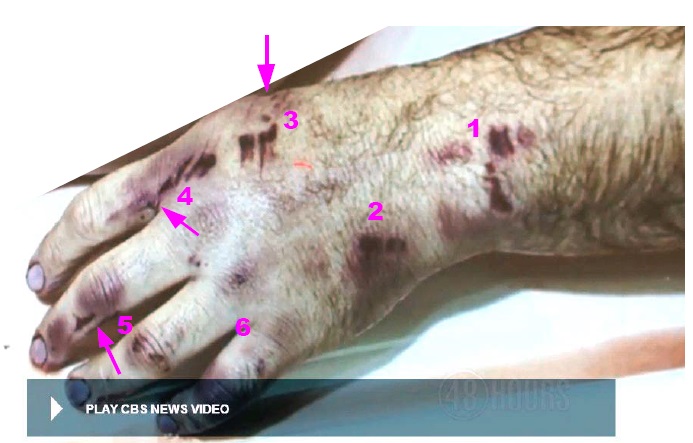
The victim’s left hand appears to have been subjected to a minimum of six defensive wounds from the assault weapon. Each of the wounds appeared to inflict differing wound markings to the hand and wrist area. Some of these wounds have distinctive features that would likely only match up with the assault weapon. The markings at Group 3 are unusual and another view of that region would help in discerning if there are actually three distinctive small rounded abrasions. The markings to the middle finger at Group 5 are also unusual and a better image would help in discerning how they were made.
Nothing was said of any X-rays taken of the hand injuries. It’s possible that the assault weapon induced some broken hand bones such as suggested by an apparent depression of the index finger in the Group 4 markings.
Overall, linear lacerations are described to the victim’s head while circular contusions and lacerations are described to the victim’s forehead. Then too, we find a variety of injury markings to the victim’s hands and wrist area including dual abrasion markings. The victim’s injuries contain several clues as to the type of assault weapon used. Quality images of all these injuries would aid in an effort to determine the assault weapon.
Part 8 of the series will be posted tomorrow 2/26/14
You can view the series of articles here.
 Wrongful Conviction News an Injustice anywhere website
Wrongful Conviction News an Injustice anywhere website
